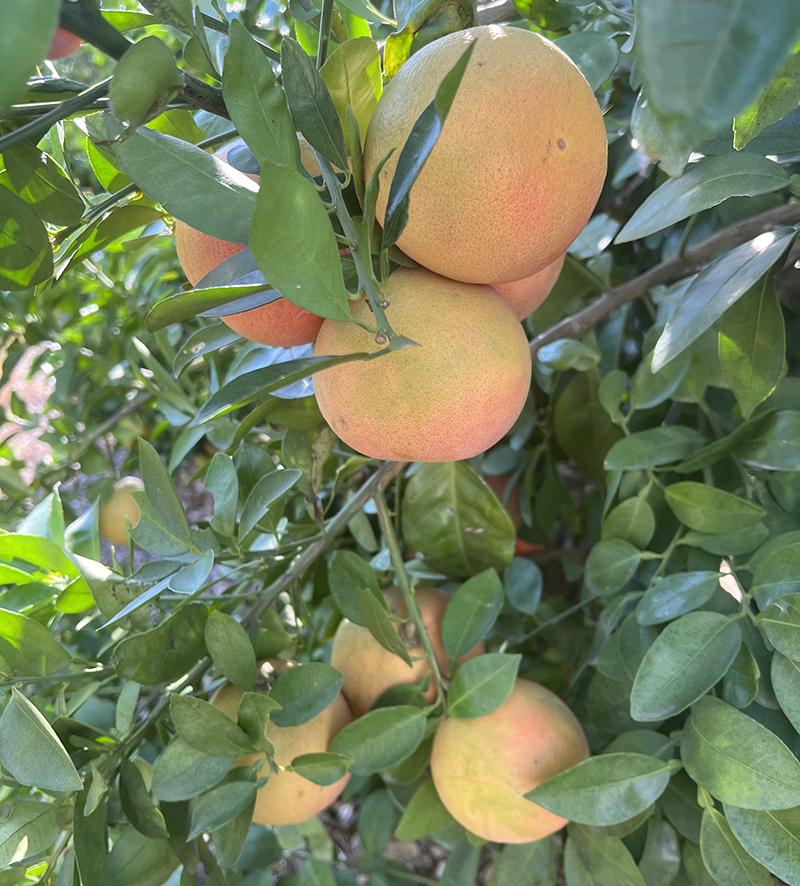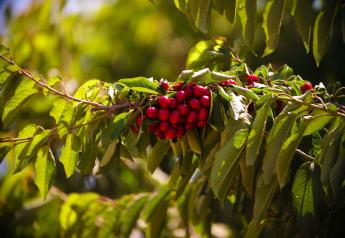After two rough seasons, Texas citrus is coming back strong

The sunny Rio Grande Valley on the border of Texas and Mexico might not be the first place that comes to mind when imagining endless acres of citrus orchards, but growers in this subtropical region of South Texas are working hard to change that perception.
“Texas truly does produce a unique citrus crop. Our grapefruit is surprisingly sweet, and our oranges are incredibly sweet, often registering a brix/acid ratio around 30,” said April Flowers, marketing director at Lone Star Citrus Growers, a family-owned, conventional grapefruit and orange packing shed based in Mission, Texas.
On the heels of two disappointing years, Texas citrus is punching above its weight this winter, and Dale Murden, president and grower at Texas Citrus Mutual, is excited to be back.
“It gets in your blood, and you can’t get enough. There’s just something about growing a great crop of grapefruit or oranges that gives you a satisfaction hard to explain to most people,” Murden told The Packer.

Boasting a 40-year career growing citrus in the Lone Star State, Murden has seen Texas citrus develop into the industry it is today. Starting in the citrus industry right out of high school as an IPM scout for the local extension office, Murden now represents the Texas Citrus Mutual organization and its affiliated companies.
Market Outlook
In the 2022-23 season, growers are excited to return with a strong harvest after two years stymied by extreme weather. “After a couple of hard years resulting from the hurricane and the freeze, we are excited to get back to doing what we love,” Flowers said. “We are pleased with our crop for this season, and we hope to be back up to 80% of a normal crop for the 2023-24 season.”
“The markets seem to indicate consumers are glad we are back on the shelves following the hurricane in 2020 and freeze in 2021,” Murden said.
All in all, the 2022-23 Texas citrus market “is strong, and the quality is great,” according to Murden. What’s more, he hopes that “somehow we begin to see some relief in the high costs of our inputs, and we get those rains to replenish the lakes.”
Hurricane Ian in Florida and the megadrought affecting Arizona and California citrus crops have benefited Texas growers. “The gap in supplies has shifted attention back to the Texas crop as buyers look to fill space on their shelves,” said Flowers, of Lone Star Citrus Growers.
“We are currently in a very strong market,” she added. “California grapefruit finished early, and the hurricane in Florida has driven prices higher. Additionally, the reinstatement of the juice standard for Mexican imports will help to maintain a healthy and stable market.”
Murden of Texas Citrus Mutual agrees. “Any disaster in another area always affects the competing regions, usually in a positive way. Supply and demand,” he said. “I personally quit growing navel oranges here years ago in favor of grapefruit, but I remember the only time I seemed to make any money with the crop was when California would freeze. Sad it’s that way, and we don’t wish disaster on any of our neighbors. We need a strong domestic supply and industry the consumers believe in and count on.”

Despite strong market demand, Murden sees “lingering drought and labor shortages dramatically increasing input costs” as continued challenges to the industry this season.
Flowers perceives challenges in the upcoming season similarly. “The rising cost of labor, raw materials and energy are narrowing margins and affecting pricing,” she said.
Persistent drought conditions
“We’ve been in a drought situation here for the last two years,” Murden said. “Fortunately, citrus growers think long term and not short term and will buy up ‘extra’ water when it becomes available. Nevertheless, we need rains in the water shed to fill the reservoirs.”
Lone Star Citrus Growers receives its water from reservoirs from the Rio Grande River. According to Flowers, “these water sources have seen historic lows over the past two years” and has led to conservation measures over the summer months, including negative water allocations for agriculture and tightening of municipal water restrictions.
Despite these lows, Flowers is optimistic. “September and October are historically our rainy months, and while we did not see much rain in Hidalgo and Cameron counties, the West Texas water shed did receive appreciable amounts, helping to restore Lake Amistad by about 20 feet,” she said. “Lake Amistad continues to rise a couple inches a day, which is very encouraging. While it is true that Falcon Lake remains very low, we have more water right now than we did at this time in 2020, allowing negative allocations to be replaced in mid-October. We certainly need more rain, but Lake Amistad is currently around 46% capacity, as of Nov. 4, 2022, which has moved us out of the danger zone for now.”
Pests and disease
When it comes to pests and disease, no news is good news and Texas growers anticipate a relatively quiet year when it comes to common pests.
“[This year is] like any other year really,” Murden said. “No quarantine issues with the Mexican Fruit Fly. Both [the] industry and USDA have done a good job with the program.”
Huanglongbing — also known as HLB or citrus greening — continues to be an ongoing concern that growers will troubleshoot, according to Murden. That said, Texas citrus growers have not seen a drop in production because of this disease this year. “Growers here learned a lot from our Florida counterparts and immediately began ACP treatments and tree health improvements when we first discovered it here in 2012,” he said.
“We are fortunate that we have not struggled with HLB like other growing regions have,” Flowers agreed. “Additionally, this past summer was hot and dry, which always helps keep pests under control.”
“I must say that the last three years have provided every manner of challenge including a pandemic, a hurricane, a freeze and now a drought,” Flowers added. “However, this has only highlighted the resilience of the Texas citrus grower and the incredible team we have at Lone Star Citrus Growers.”







